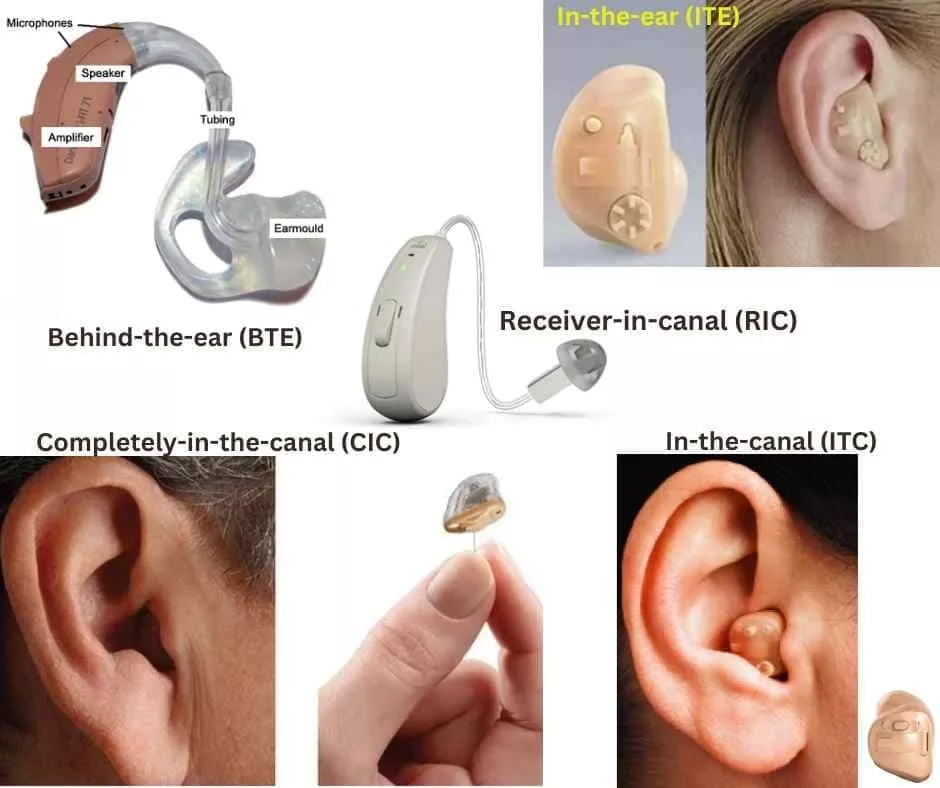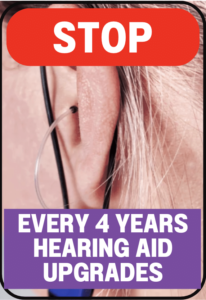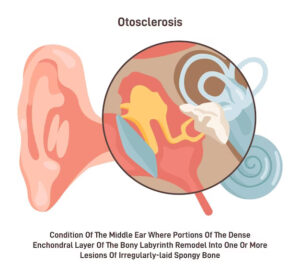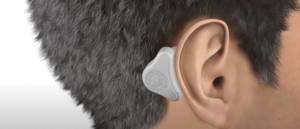
There are several types of hearing aids available, each designed to suit different needs and preferences. Here are some of the most common types:
Behind-the-ear (BTE) hearing aids: These are the most widely used type of hearing aids and are suitable for people of all ages. They consist of a small plastic case that fits behind the ear and a plastic tube that connects the case to a custom-made earpiece called an earmold. BTE hearing aids are suitable for a wide range of hearing losses, from mild to severe. They are a good choice for people who need more amplification, have difficulty handling small devices, or have dexterity issues.
-
Advantages: These hearing aids are suitable for people of all ages and can accommodate a wide range of hearing losses. They are also easy to handle and adjust, and the earmold provides a comfortable fit.
-
Disadvantages: BTE hearing aids may be visible to others and may cause some cosmetic concerns for some users. They may also pick up more wind noise compared to other types of hearing aids.
In-the-ear (ITE) hearing aids: These hearing aids are custom-made to fit the shape of the outer ear. ITE hearing aids are suitable for people with mild to severe hearing loss. They are a good choice for people who want a hearing aid that is easy to handle and adjust and provides a comfortable fit.
-
Advantages: ITE hearing aids are custom-made to fit the shape of the outer ear, providing a comfortable and secure fit. They are easy to handle and adjust and are suitable for people with mild to severe hearing loss.
-
Disadvantages: ITE hearing aids may be more visible to others and may cause some cosmetic concerns for some users. They may also pick up more wind noise compared to smaller hearing aids.
In-the-canal (ITC) hearing aids: These are smaller than ITE hearing aids and are custom-made to fit partially or completely inside the ear canal. They are a good choice for people who want a discreet appearance and are comfortable with small devices.
-
Advantages: ITC hearing aids are smaller than ITE hearing aids and provide a more discreet appearance. They are easy to handle and adjust and are suitable for people with mild to moderate hearing loss.
-
Disadvantages: ITC hearing aids may be more prone to wax blockage and may not be suitable for people with severe hearing loss. They may also be more difficult to handle and adjust due to their small size.
Completely-in-the-canal (CIC) hearing aids: These are the smallest type of hearing aids and are custom-made to fit completely inside the ear canal. They are a good choice for people who want a very discreet appearance and are comfortable with small devices.
-
Advantages: CIC hearing aids are the smallest type of hearing aid and provide a very discreet appearance. They are suitable for people with mild to moderate hearing loss.
-
Disadvantages: CIC hearing aids may be more prone to wax blockage and may not be suitable for people with severe hearing loss. They may also be more difficult to handle and adjust due to their small size and may not be suitable for people with dexterity issues.
Receiver-in-the-canal (RIC) hearing aids: These hearing aids are similar to BTE hearing aids, but the receiver (speaker) is placed inside the ear canal instead of behind the ear. RIC hearing aids are suitable for people with mild to severe hearing loss. They are a good choice for people who want a hearing aid that provides a natural sound and is easy to handle and adjust.
-
Advantages: RIC hearing aids provide a more natural sound and are suitable for people with mild to severe hearing loss. They are easy to handle and adjust and provide a comfortable fit.
-
Disadvantages: RIC hearing aids may be more visible to others and may cause some cosmetic concerns for some users. They may also pick up more wind noise compared to smaller hearing aids.
It is important to consult with a hearing healthcare professional to determine the most suitable type of hearing aid for your specific needs and hearing loss.






